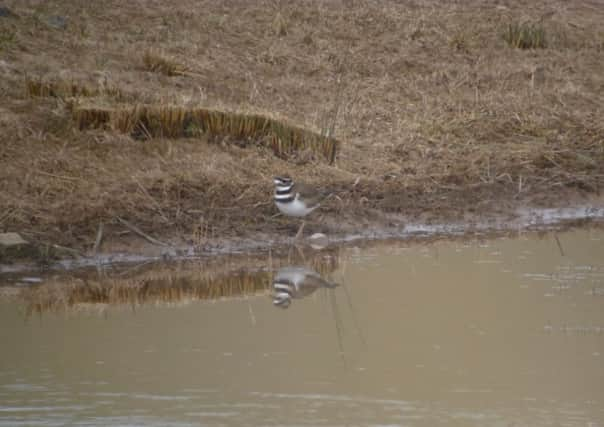Rare bird has keen twitchers flocking to view Alston Wetland


It was the morning of Sunday, April 7, and RSPB officer Gavin Thomas Gavin Thomas heard a bird calling over Alston Wetland which he last heard when on a trip to Texas in 2007!
He discovered it was a killdeer, an extremely rare North American wading bird similar to the little ringed plovers seen at Alston, but bigger with two broad black bands across its chest, much longer wings with broad white wing-bars, a long black tipped tail and a bright orange rump.
Advertisement
Hide AdAdvertisement
Hide AdGavin said: “It’s likely that it was blown off course, caught up in a rapidly moving transAtlantic storm last autumn or winter, and is now on its spring migration north but on the wrong side of the Atlantic Ocean. Killdeers are a national rarity, the last one seen by the twitching masses in the UK was in Norfolk in 2006. This one was the first ever to be seen in Lancashire and north west England so was deservedly popular.”
News of its visit spread quickly and, once arrangements had been made locally for parking, thanks to Spout Farm and Forshaws, it went out on the rare bird information services plus via pagers, mobile phones, Facebook and Twitter. Gavin said: “Within minutes, twitchers were descending on Alston. Cars were soon parked all along Preston Road and Fell Brow and it appeared Longridge was being invaded.
“Hundreds made the trip from far and wide, but apart from the lucky 40 or so who were quickest off the mark, most missed the bird as it flew off shortly before midday. Apart from a brief re-appearance the following afternoon for one lucky Longridge birder, the killdeer was never seen again.”
The killdeer is the rarest bird so far recorded at Alston Wetland which is being managed under the guidance of the RSPB’s Bowland Wader Project for the UK’s more familiar wading birds - see www.rspb.org.uk.